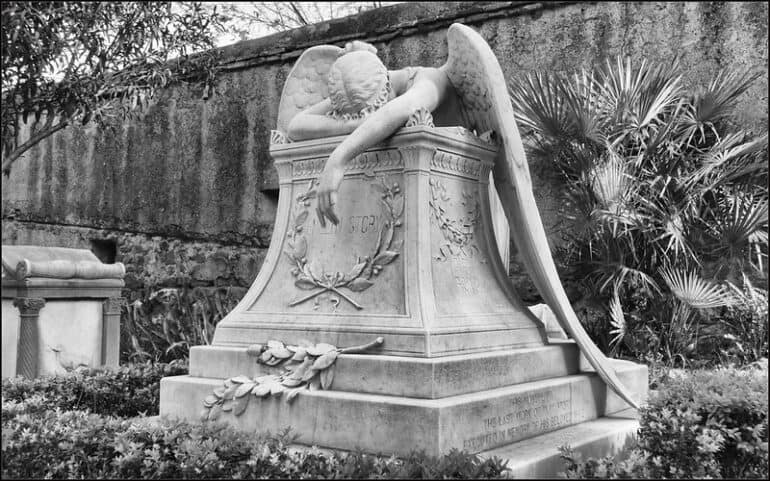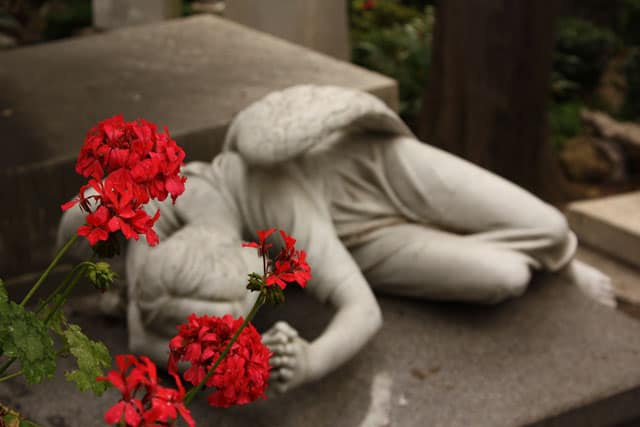Rome’s Non-Catholic Cemetery
If you can forget about Rome’s tourist destinations and let yourself go with the flow, then you will inevitably stumble upon some unexpected treasures. This happened to me as I was roaming around the neighborhood of Ostiense and spotted a beckoning iron gate in a high stone wall. This is not only the entrance to Rome’s Non-Catholic cemetery but the start of a special spiritual experience. As I dove deep into the calm jungle of ferns, vines, and pine trees, I also dug down into my soul. Without the noises of the pulsating city I could contemplate memories of the lives and creations of some of the greatest talents who that lived in Rome.


There are fascinating myths in every corner of artists who breathed their last in perfect harmony with the Eternal City. On the right-hand side of the graveyard, you can find a bit of Italian art and the memory of Antonio Gramsci, the famous philosopher. Meet the soul of Shelley and his family at the top of the proud hill of the cemetery and enjoy the stunning view.
See the grave of American sculptor William Wetmore Story who is buried with his wife Emelyn, under an Angel of Grief which he himself designed.

On the other side of the cemetery watchful visitors can pay their respects at the nameless tombstone of John Keats, who moved here for his last months in the hope that the humid and salty air would save him. Along the path, towers the pyramid tomb of Cestius surrounded by fat cats. However, the monument is still under reconstruction so those of you who can return from time to time will see more and more.
It’s an enchanted and hidden oasis that offers a free trip into history and literature. A 3 euro donation at the exit is always welcome in exchange for a genuinely moving experience.
Go on a walking tour of the Non-Catholic Cemetery
6, 00153 Roma RM, Italia
Address
Via Caio Cestio, 6 (Piramide/Ostiense)
How to get there
Metro Piramide
Opening hour
Mon-Sat 9am-5pm, Sunday 9am-1pm
Ticket
Free entry, 3 € as a donation is welcome







John Keats…
After dark vapors have oppress’d our plains
For a long dreary season, comes a day Born of the gentle South, and clears away From the sick heavens all unseemly stains. The anxious month, relieved of its pains, Takes as a long-lost right the feel of May; The eyelids with the passing coolness play Like rose leaves with the drip of Summer rains.
The calmest thoughts came round us; as of leaves Budding—fruit ripening in stillness—Autumn suns Smiling at eve upon the quiet sheaves— Sweet Sappho’s cheek—a smiling infant’s breath— The gradual sand that through an hour-glass runs— A woodland rivulet—a Poet’s death.
John Keats…
“Rid of the world’s injustice and its pain,
He rests at last beneath God’s veil of blue;
Taken from life while life and love were new
The youngest of the martyrs here is lain,
Fair as Sebastian and as foully slain.
No cypress shades his grave, nor funeral yew,
But red-lipped daisies, violets drenched with dew,
And sleepy poppies, catch the evening rain.
O proudest heart that broke for misery!
O saddest poet that the world hath seen!
O sweetest singer of the English land!
Thy name was writ in water on the sand,
But our tears shall keep thy memory green,
And make it flourish like a Basil-tree…”